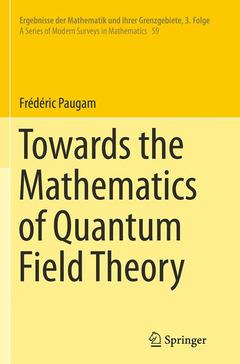Description
Towards the Mathematics of Quantum Field Theory, 2014
Ergebnisse der Mathematik und ihrer Grenzgebiete. 3. Folge / A Series of Modern Surveys in Mathematics Series, Vol. 59
Author: Paugam Frédéric
Language: English
Subjects for Towards the Mathematics of Quantum Field Theory:
Approximative price 168.79 €
In Print (Delivery period: 15 days).
Add to cartPublication date: 08-2016
Support: Print on demand
Publication date: 03-2014
487 p. · 15.5x23.5 cm · Hardback
Description
/li>Contents
/li>Biography
/li>Comment
/li>
This ambitious and original book sets out to introduce to mathematicians (even including graduate students ) the mathematical methods of theoretical and experimental quantum field theory, with an emphasis on coordinate-free presentations of the mathematical objects in use. This in turn promotes the interaction between mathematicians and physicists by supplying a common and flexible language for the good of both communities, though mathematicians are the primary target. This reference work provides a coherent and complete mathematical toolbox for classical and quantum field theory, based on categorical and homotopical methods, representing an original contribution to the literature.
The first part of the book introduces the mathematical methods needed to work with the physicists' spaces of fields, including parameterized and functional differential geometry, functorial analysis, and the homotopical geometric theory of non-linear partial differential equations, with applications togeneral gauge theories. The second part presents a large family of examples of classical field theories, both from experimental and theoretical physics, while the third part provides an introduction to quantum field theory, presents various renormalization methods, and discusses the quantization of factorization algebras.
Introduction.- Mathematical Preliminaries.- Classical Trajectories and Fields.- Quantum Trajectories and Fields.- Appendices.




